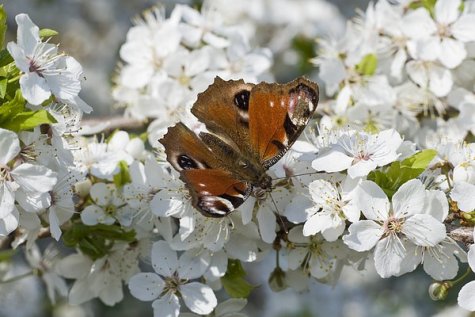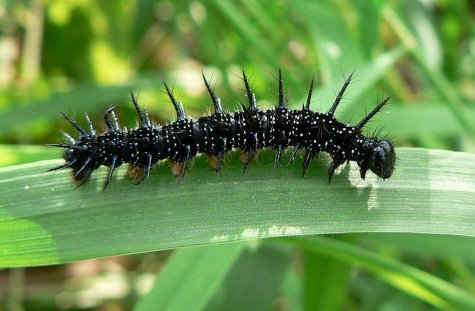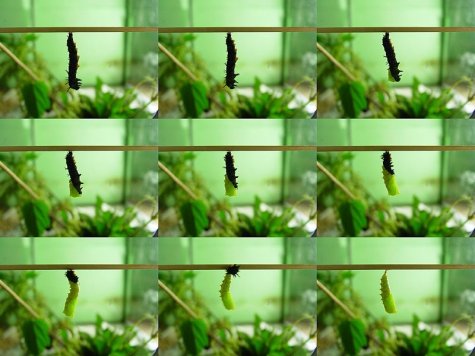Few large butterflies to be seen this year
Photo: Arne Ader
Translation: Liis
Peacock on damson tree
Peacock Päevapaabusilm Inachis io or Nymphalis io
It might have been expected that a summery week would enrich our butterfly scene but at least in north-western Estonialarge butterflies were quite scarce.
Imagos of the peacock, proclaimed as the butterfly of the year and belonging to the Nymphalidae or brush-footed butterflies can be seen in early June. Sometimes they have a quite worn appearance – no wonder when the wearer of such a delicate costume is eleven months old and has spent the winter in god knows what woodshed or garage.
The females lay eggs only on nettles (Urtica dioica), according to some sources also hops but I haven’t noticed peacock caterpillars on this over the years. Thus we have to do with monophages, that is, the caterpillars only utilize one plant species and who is interested can easily notice them; identification is not difficult.
The female butterflies lay their eggs in clusters on the underside of nettle leaves(the eggs can be up to five hundred). After about one week caterpillars hatch from the eggs. They live on the plant together in groups and they are about four centimetres long and in addition to the nettles they are also protected by six rows of stiff spines. On the body segments plenty of white dots can be seen. They pupate either on the nettle stems or they creep away to pupate on the wall of a building. This stage in becoming an insect is called a pupa, Latin for ”doll”, because during this period they are not able to move much.
Towards the end of July we hope to see the first beautiful and colourful peacocks…
Peacock caterpillar (images from Wikipedia)
Pupation of peacock caterpillar. Photos made at intervals of 60 seconds











